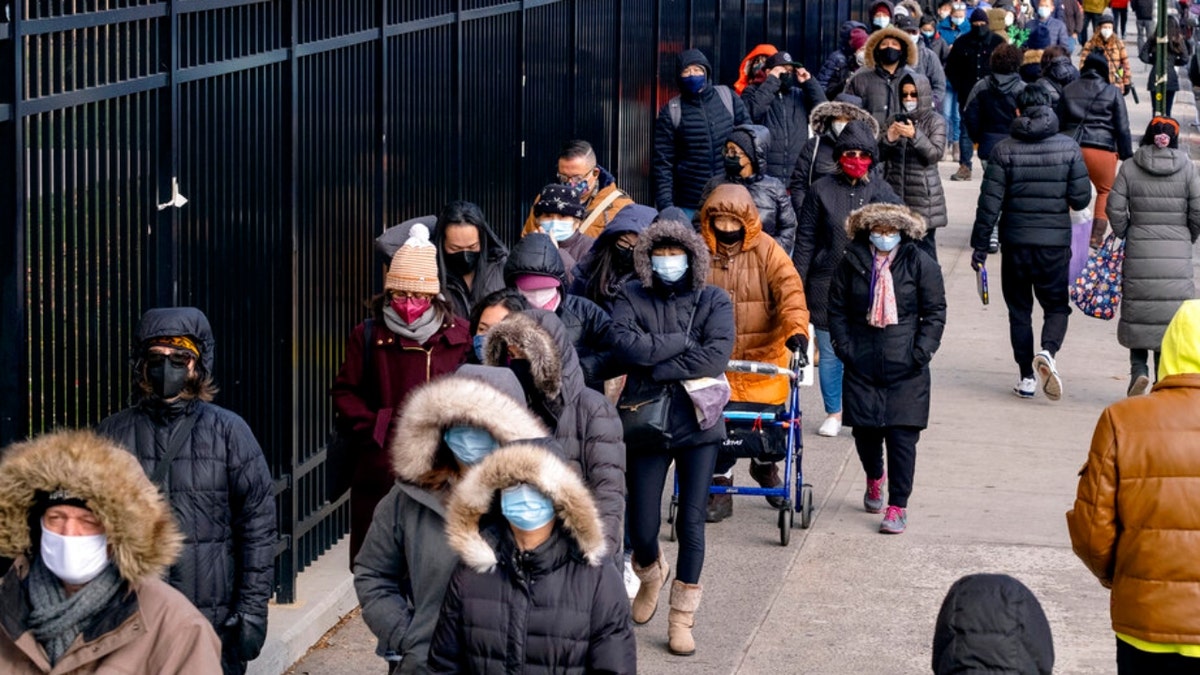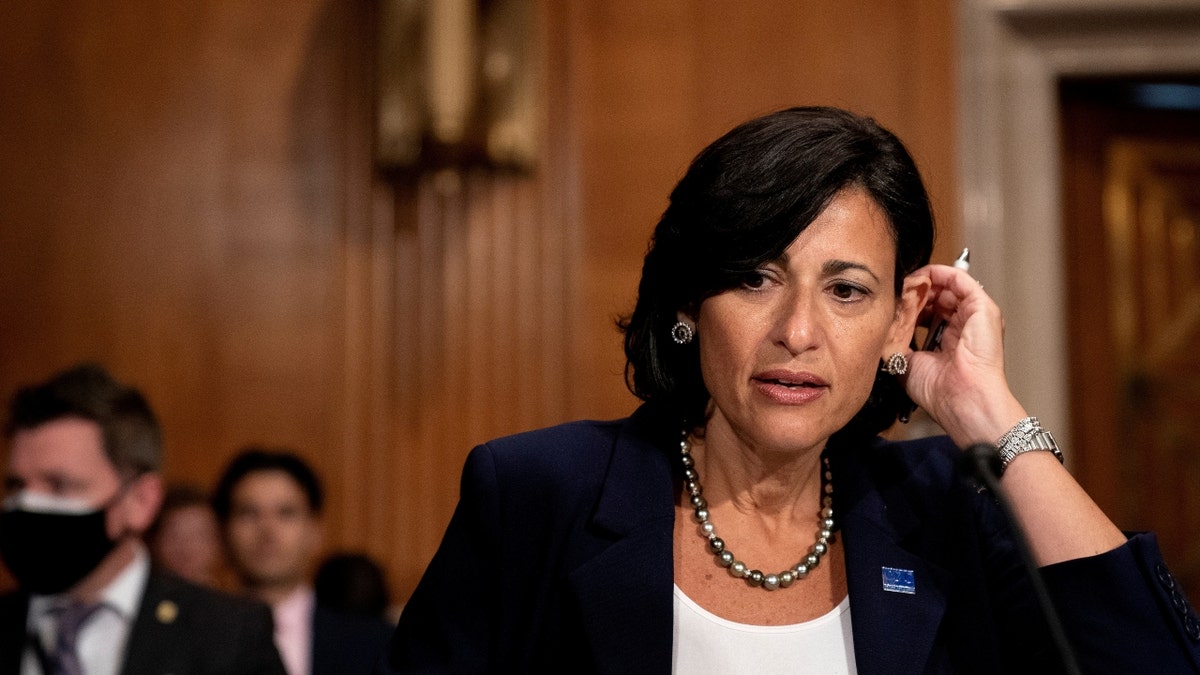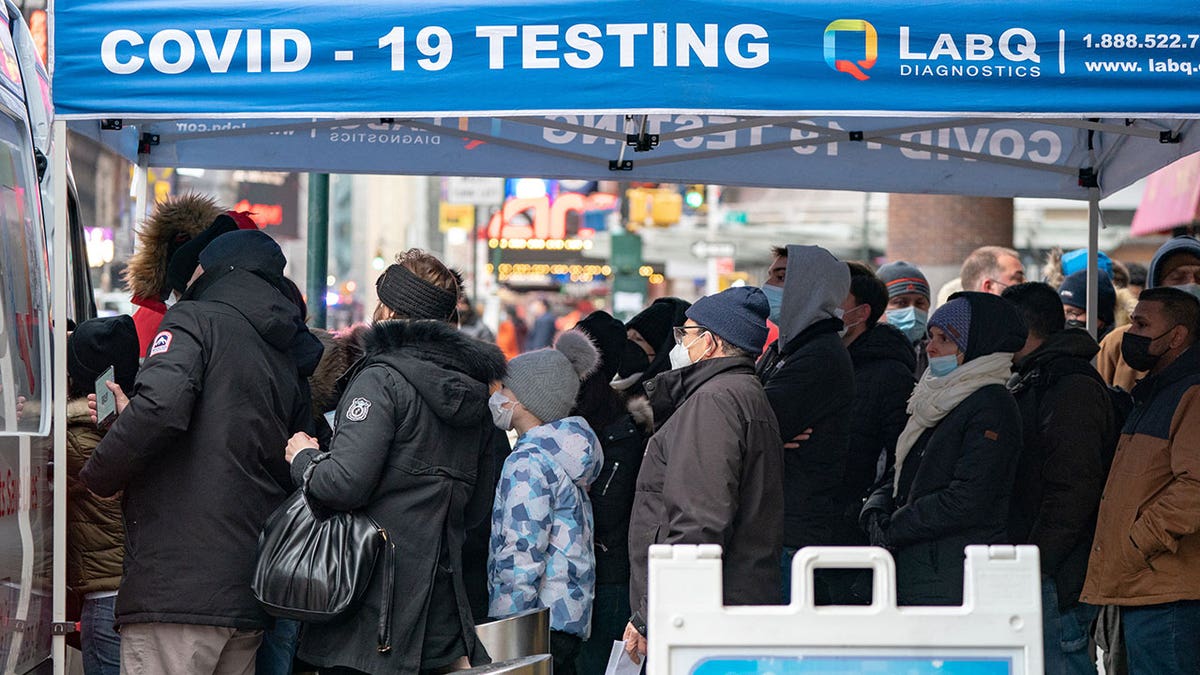Fox News Flash top headlines for December 29
Fox News Flash top headlines are here. Check out what's clicking on Foxnews.com.
The U.S. record for daily coronavirus cases has been broken.
Data from the Johns Hopkins Coronavirus Resource Center on Tuesday showed that the country had reported 512,553 new confirmed daily cases.
OMICRON SURGE MAY BE INEVITABLE, DESPITE CONTAINMENT EFFORTS IN ASIA
The previous record was last winter, according to the university.
In addition, the seven-day moving average for U.S. COVID-19 cases climbed to more than 280,000 this week.

People line up to receive test kits to detect COVID-19 as they are distributed in the Lower East Side neighborhood in the Manhattan borough of New York Thursday, Dec. 23, 2021. (AP Photo/Craig Ruttle)
This comes immediately after the Centers for Disease Control and Prevention (CDC) reduced the number of days that infected Americans should isolate from 10 days to five – leading to criticism.
In TV interviews on Wednesday, CDC Director Dr. Rochelle Walensky said the agency expects case numbers to increase as the omicron and delta variants continue to spread across the nation.
She told CNN's "New Day" that fewer than a third of people have been isolating when they need to and that previous guidance had been "conservative."
Walensky said this decision was made based on behavioral science and what the agency thought people would be able to tolerate.
"We followed numerous areas of science in making this important decision," she told NBC's "Today" show. "One, of course, was how the virus behaves. How much virus do you still have that you could potentially transmit after five days? And, we generally know that most of your transmission potential happens in those one to two days before you have symptoms and those two to three days after. So, by the time five days of isolation has occurred, you probably have about 85 to 90% of all of your transmission potential behind you while you've been in isolation."
According to Walensky, another factor in the decision was where the U.S. is in epidemiology right now.

Rochelle Walensky, director of the Centers for Disease Control and Prevention, on July 20, 2021. (Stefani Reynolds/Pool via REUTERS/File Photo)
"Skyrocketing case numbers, as you have noted. We anticipate they could get even higher. And, many people are asymptomatic – or only mildly symptomatic; especially those who have been vaccinated or boosted. And so, they may very well not be able to or willing to comply with 10 days worth of isolation," she said.
"So this was really a way to tell people, 'Make sure you isolate in those first five days when you're maximally infectious and then, of course, wear a mask for those last five days to make sure that you don't spread anything that might be left over to others.'"
She assured that guidance and recommendations are adapted to current science and recognized that while the government is doing "a lot" it needs to be doing more on testing.
The Biden administration announced last week that half a billion more at-home rapid COVID-19 tests would be sent free to the American public.

People queue at a popup COVID-19 testing site as the omicron coronavirus variant continues to spread in Manhattan, New York City, on Dec. 27, 2021. (REUTERS/Jeenah Moon)
Since the beginning of the pandemic, the U.S. has seen nearly 53.2 million confirmed cases of the virus and deaths have surpassed 821,000.
Much remains unknown about the omicron variant – including its severity – although scientists say the variant is more transmissible than other strains.
CLICK HERE TO GET THE FOX NEWS APP
"Omicron is moving so quickly, in addition to vaccination, public health social measures are also needed to stem the wave of COVID-19 infection, protect health workers and systems, open up societies and keep children in school," World Health Organization Director-General Dr. Tedros Adhanom Ghebreyesus said in a Wednesday press briefing.
The Associated Press contributed to this report.


